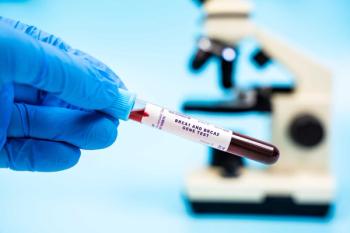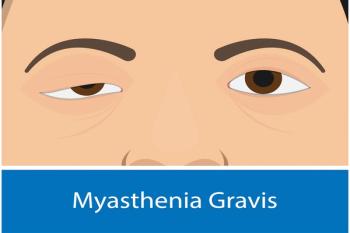
Melatonin's Role in PAH Treatment Needs More Research
Key Takeaways
- Melatonin treatment improved quality of life and plasma antioxidant capacity in PAH patients, with significant symptom reductions in palpitations, dyspnea, and fatigue.
- The study involved 19 female patients with idiopathic or connective tissue disease-associated PAH, receiving a daily 6-mg dose of melatonin.
Previous knowledge on melatonin use for pulmonary arterial hypertension has primarily been gathered from animal studies, with oxidative stress implicated in the disease’s progression and severity.
With up to 6 months of melatonin treatment, patient quality of life (QOL) and their plasma antioxidant capacity both improved among those living with
New research on the dietary supplement and antioxidant hormone’s use among 19 patients was published in a recent issue of
The adult-only (aged 18-65 years) patients who participated in their interventional, prospective, noncontrolled, nonblinded study had Group I PAH that was either idiopathic or associated with World Health Organization functional class (WHO FC) II/III connective tissue disease (CTD). They received a daily 6-mg dose of melatonin 2 hours prior to bedtime, and evaluations were done at baseline, 3 months, and 6 months. All were female patients; their mean (SD) age was 41.2 (2.7) years, mean body mass index was 292 (1.0) kg/m2, and 89.4% had idiopathic disease. The most common therapy was phosphodiesterase type 5 inhibitors (100%).
Research incorporating animal models has produced promising data on melatonin use for PAH, with decreases in pulmonary systolic pressure, right ventricle hypertrophy, arteriolar wall thickness, and NOX1 expression, suggesting, the study authors note, “oxidative stress may be a proper strategy to avoid PAH progression.”
Overall, the patients’ mean time since PAH diagnosis was 5.4 (2.7) years. During the study period, total patients with WHO FC II disease slightly increased (from 79% at baseline to 86% by 6 months), while those with WHO FC III disease dropped (from 21% to 16%, respectively). “This stability in FC suggests that while melatonin improved other end points,” the authors wrote, “it did not significantly alter the WHO FC status in this PAH population.”
By the 6-month mark, 3 of 4 prominent PAH symptoms all saw significant decreases, with P < .05 indicating statistical significance:
- Palpitations: 84.2% to 42.1% (P = .013)
- Dyspnea: 89.4% to 57.8% (P = .041)
- Fatigue: 84.2% to 36.8% (P = .007)
- Chest pain: 31.5% to 21.0%
For the 6MWT, the only indicator of improvement that saw significant change was baseline heart rate, which was a mean 75.3 (2.4) bpm at baseline vs 67.2 (2.4) bpm by 6 months. Significant changes were not seen in total walking distance (470 [15] vs 476 [14] m), which equated to a 1-percentage-point improvement; systemic diastolic arterial pressure (70.2 [2.7] vs 67.3 [2.5] mm Hg); or oxygen saturation (95.3% [0.4%] vs 95.8% [0.4%]).
When echocardiographic variables were measured, left ventricle ejection fraction, right atrium area, fractional area change, systolic pulmonary arterial pressure, tricuspid annular plane systolic ejection, and right ventricular strain had not changed. Further, just 4 patients at baseline and 3 by 6 months reported mild pericardial effusion, which is fluid build-up in the pericardial space.
However, there was a demonstrated significant increase in plasma total antioxidant capacity, from a baseline mean of 2.94 (0.13) to 5.41 (0.48) at 3 months and 8.41 (0.19) µmol TE/L at 6 months, and ferric reducing capacity from a baseline mean of 191 (12) to 229 (10) at 3 months and 256 (17) at 6 months.
For QOL, significant reductions in symptom severity scores were seen for cardiovascular symptoms, cardiopulmonary symptoms, and physical impact over the 6 months, but were especially notable by month 5. Emotional/cognitive impact showed noticeable improvement by month 4. Total scores for these 4 domains indicated progressive clinical improvement by the 2 follow-ups.
Overall, there was a positive correlation seen between melatonin levels and total plasma antioxidant capacity of each patient during treatment (P ≤ .0001; r = 0.6090), with a notable lack of adverse effects.
Of the strength of their findings, the authors said they attributed their positive results to the melatonin because among patients with PAH, a 6-month period is typically marked by clinical deterioration. However, among their cohort, there was a marked improvement in oxidative stress and antioxidant capacity. Still, they did not measure plasma levels of melatonin, which may limit wider applicability of their results.
Therefore, they believe a larger randomized controlled study is necessary before melatonin can be recommended for clinical use in PAH; they consider their study a pilot study with support required from a larger follow-up trial.
References
- Pulmonary hypertension. Mayo Clinic. Accessed June 26, 2025.
https://www.mayoclinic.org/diseases-conditions/pulmonary-hypertension/symptoms-causes/syc-20350697 - De la Fuente A, Zagolín, Parra V, et al. Melatonin improves quality of life, oxidative stress, and cardiovascular function in pulmonary arterial hypertension. Pulm Circ. 2025;15(2):e70109. doi:10.1002/pul2.70109
- Farahmand F, Malik A, Sharma A, Bagchi AK, Singal PK. Role of oxidative stress versus lipids in monocrotaline‐induced pulmonary hypertension and right heart failure. Physiol Rep. 2021;9(22):e15090. doi:10.14814/phy2.15090
Newsletter
Stay ahead of policy, cost, and value—subscribe to AJMC for expert insights at the intersection of clinical care and health economics.













































